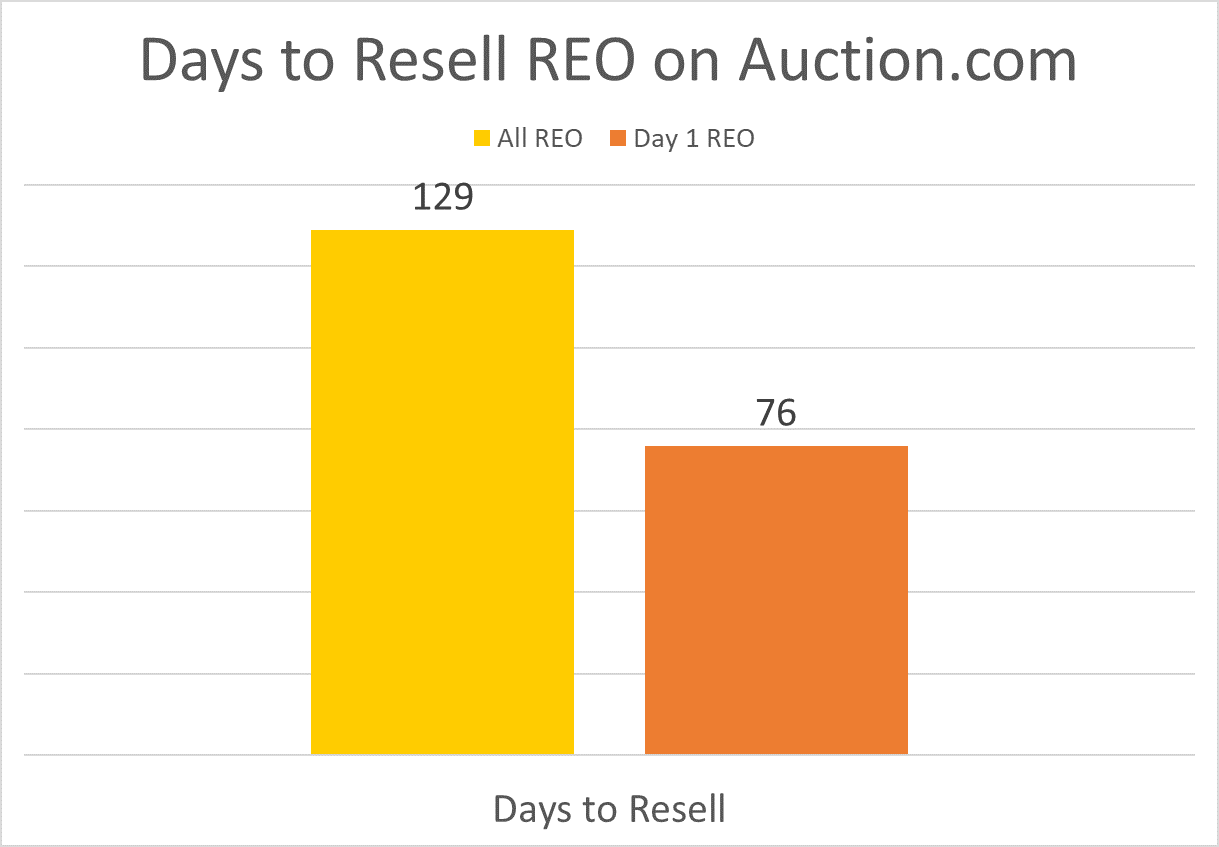Overused phrases like “data-driven analysis” and “data-based decisions” are empty buzzwords unless individuals and institutions actually give data permission to change opinions.
There’s an opportunity to give data that opinion-shaping power when it comes to answering a specific question regarding neighborhood stabilization: is it better for a distressed foreclosure property to revert back to the foreclosing lender or be sold to a real estate investor at the foreclosure auction, if the primary goal is to most effectively stabilize the surrounding neighborhood?
Conventional wisdom in the mortgage servicing industry has traditionally defaulted to the former: a neighborhood is better stabilized when a distressed property reverts back to the foreclosing lender. The reasoning behind this conventional wisdom? A lender is more likely to get the property back into the hands of an owner-occupant, and owner-occupants have a more vested interest in neighborhood quality and stability than do real estate investors.
But a thorough analysis of data — both Auction.com proprietary data as well as broader public record data — shows that properties sold to real estate investors at foreclosure auction more quickly convert to owner-occupancy than those that revert to lenders at the auction.
“We do see some owner-occupants buying directly at the foreclosure auction — the absolute quickest path to owner-occupancy for these distressed assets — but most owner-occupant buyers are not in a position to buy all-cash without a full property inspection,” said Jason Allnutt, CEO at Auction.com. “In this majority of cases, local real estate investors usually represent the best bridge from distress to owner-occupancy.”
ROI-Accelerated Rehab
The bridge from distressed property to owner-occupied property often requires eviction and extensive rehab, processes that require, time, money and expertise that may not be the core function of mortgage servicers. The data shows that local real estate investors can perform the same eviction and rehab functions much faster — returning those distressed properties to the retail market more efficiently.
Proprietary Auction.com data appended with public record data from Collateral Analytics demonstrates this trend based on an analysis of more than 19,000 properties brought to foreclosure auction in the three months ending in February 2018. A year later, properties that sold to third-party investors had resold in an average of 193 days, while properties that reverted back to the foreclosing lender at the auction (also known as REO) had resold in an average of 221 days. That means it took lenders about a month longer to resell than it did real estate investors. (See chart below; click to enlarge.)
Furthermore, investors who don’t resell within a year are still returning the home to retail more quickly, but as a rental rather than a resale. And in many cases that rental may be to the former homeowner, which also helps to stabilize the neighborhood. Surveys of buyers using the Auction.com platform reveal that more than 50 percent of those buyers are willing to rent the properties they purchase at foreclosure auction back to the former homeowner.
“You are better off selling it quickly to a cash buyer who usually within three months is able to completely renovate it and either sell it to an end-user or rent it,” said Josh Cantwell, CEO of Freeland Lending, a Cleveland, Ohio-based company that lends money to home flippers. Cantwell noted that investors are motivated to perform “residential redevelopment” as quickly as possible to provide the best return. “You are under the pressure of creating a return. When you’re under the pressure of creating an ROI you are going to work really hard to put that property back in service.”
REO properties that sold via the Auction.com platform took an average of 129 days to sell after REO was received by Auction.com, according to the analysis of more than 18,000 REO properties that were sold on Auction.com in the 12 months ending in April 2019. That 129 days dropped to just 76 days for properties that sold through Auction.com’s Day 1 REO program, which puts a property in to the online auction flow the day after it reverts back to the lender at foreclosure auction.
Faster Return to Owner-Occupants
But the time to resell after foreclosure auction is not the whole story. A foreclosed home often has a longer journey beyond just the initial resale before it finally returns to the retail market — particularly when it comes to homes that go down the REO path.
Among nearly 7,000 properties that reverted back to the lender in the three months ending in February 2018 and then subsequently resold, only 48 percent were owner-occupied one year later, according to the analysis of Auction.com and Collateral Analytics data. By contrast, 74 percent of properties that sold to third-party investors at the foreclosure auction and then subsequently resold were owner-occupied one year later.
While it should not be overlooked that at least some of these REO properties are selling directly to owner-occupants — in fact an impressive 41 percent sold through Auction.com’s Day 1 REO program went to owner-occupants, surprising given that those properties are typically sold without much rehab — the majority of these REO sales are going to investors. That means a much longer path to owner-occupancy.
The 52 percent of reverted assets that sold to nonowner-occupants (investors) will take about 171 additional days (the average time it takes an investor to rehab and resell even without listing for sale) to get into the hands of an owner-occupant. That means the entire timeline from foreclosure to owner-occupancy for those properties is around 392 days — 199 days longer than it takes for the majority of third-party purchases to return to owner-occupancy.
While the owner-occupancy rate is not the only measure of a stabilized neighborhood, it’s an important one. And by that measure, neighborhood stabilization is more quickly and comprehensively being achieved through sales to third-party foreclosure buyers than it is through lender repossessions.
Time the Enemy of Stabilization
The longer a property takes to get into the hands of an owner-occupant or a tenant, the longer that property will be sitting vacant. And vacant properties pose the most danger to destabilizing a neighborhood, according to James Rokakis, former Cuyahoga County, Ohio (Cleveland) Treasurer and Director of the Western Reserve Land Conservancy, an organization that focuses on transforming vacant, unsafe and unproductive properties throughout Ohio into useful ones.
“We want these properties as quickly as possible repurposed,” said Rokakis, who nearly 10 years ago helped launch the Cuyahoga County Land Bank, which became a model for more than 50 land banks throughout the state. “The longer a property remains vacant, the more likely it is that that property will be vandalized.”
Locally Sourced Rehab
By selling distressed foreclosure inventory directly to investors at the foreclosure auction, a servicer not only returns properties to the retail market more quickly, it also supports local business owners — given that real estate investors are primarily local mom-and-pop operations.
An ATTOM Data Solutions analysis of homes flippers by number of flips completed shows that more than two-thirds (69 percent) of home flips completed in the first quarter of 2017 were by “mom-and-pop” flippers doing just one flip during the quarter. Another 20 percent of flips were by “mid-tier flippers” completing two to nine during the quarter, and just 11 percent of flips were by “top-tier flippers” completing more than 10 flips during the quarter.
More than three-fourths of buyers purchasing properties via the Auction.com platform — either via live foreclosure auction or online REO auction — live within 50 miles of the property purchased, according to an analysis of buyer location data. Nearly two-thirds of those buyers (65 percent) live within 25 miles of the property purchased.
“This local economic benefit combined with a faster return to owner-occupancy make selling to local real estate investors earlier in the disposition process a more effective strategy for improving neighborhood stability than the traditional REO rehab-and-sell disposition strategy,” Allnutt said. “This may surprise many in the industry, but the data clearly shows this is the case.”







